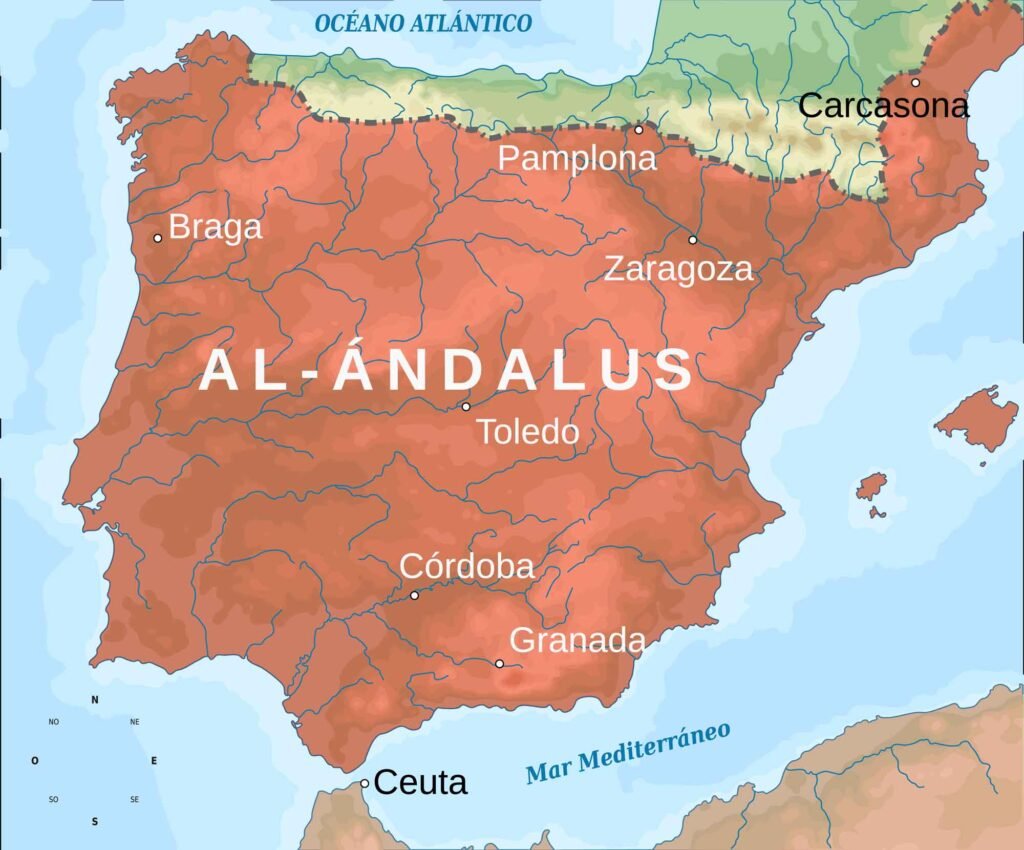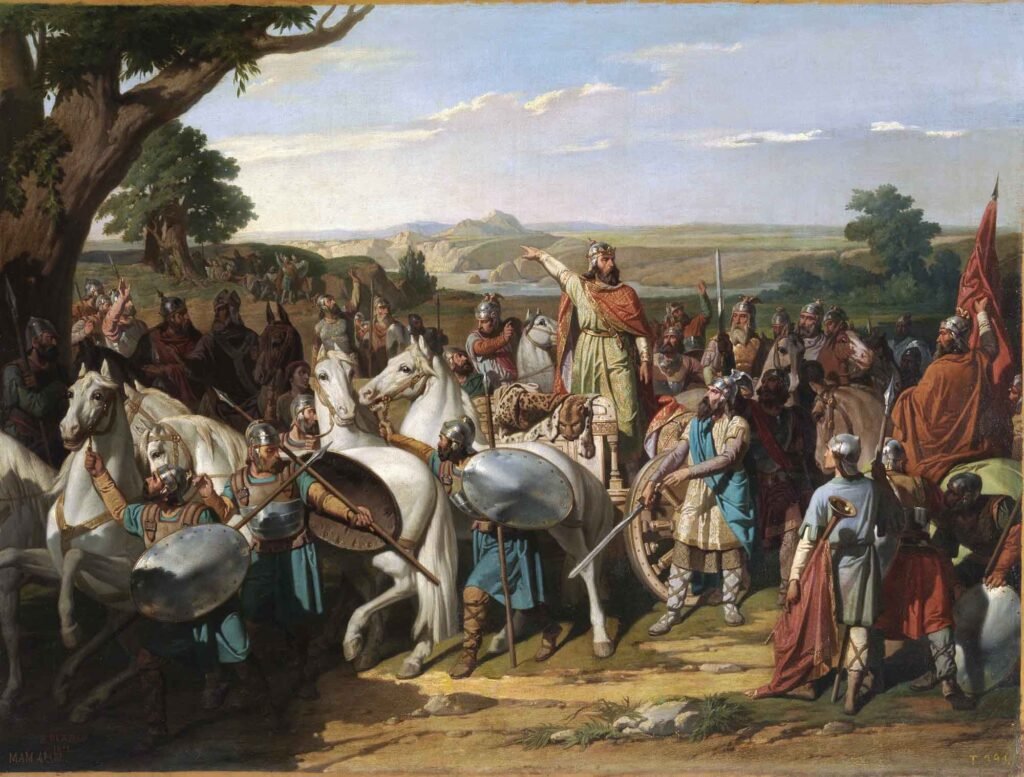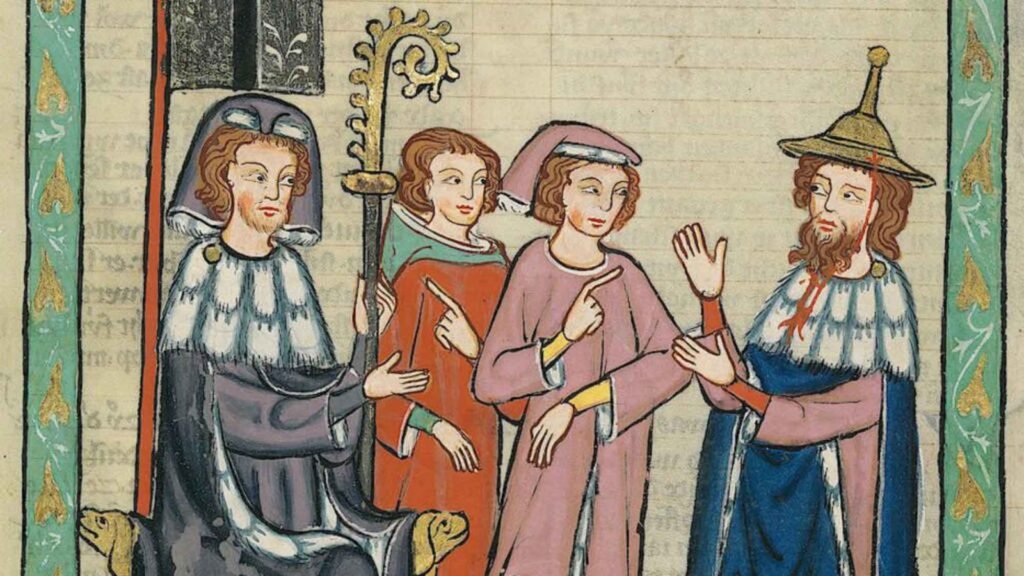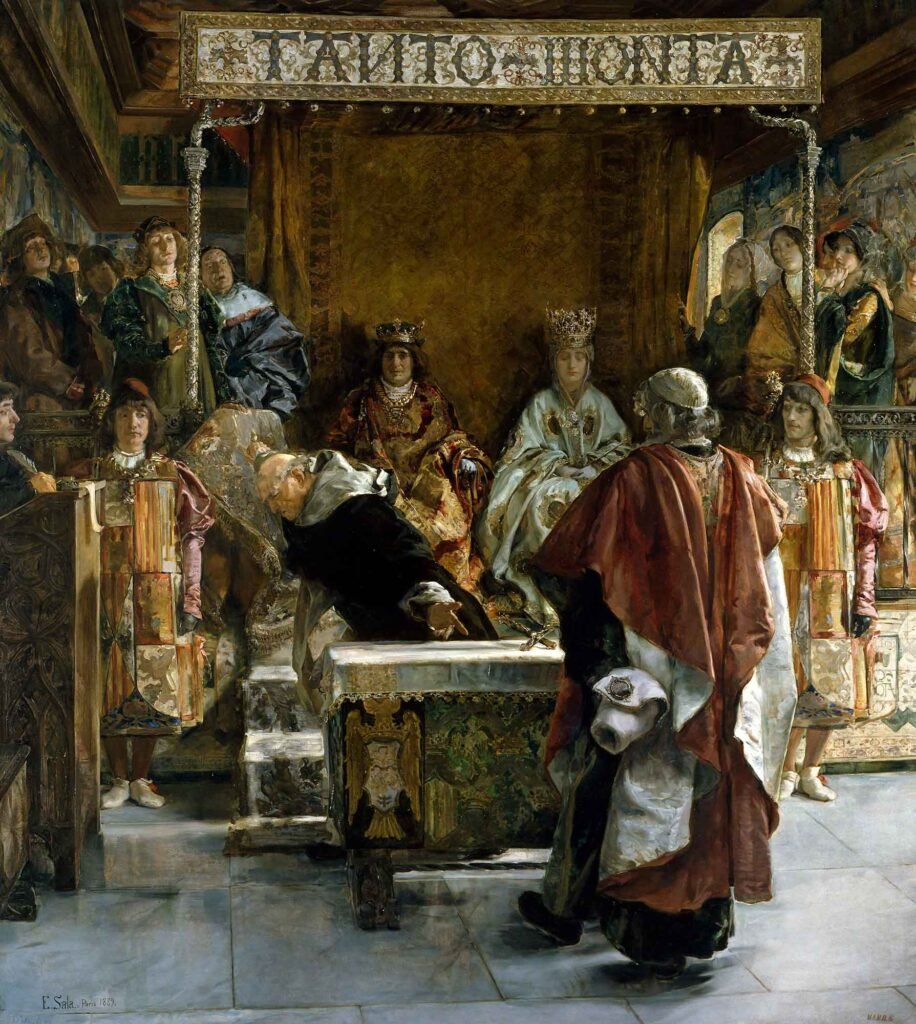The history of Jewish-Muslim relations has long been a complex and fascinating subject. One of the most notable eras of peaceful coexistence took place in Muslim Spain, also known as Al-Andalus, on the Iberian Peninsula. During this period, which spanned from the 8th to the 15th century, Jews found themselves thriving under Islamic rule, enjoying permissiveness and prosperity that they seldom experienced elsewhere. We will explore how the Jews in Muslim Spain were treated and shed light on this remarkable chapter in history.

A Brief History of Muslim Spain
The history of Muslim Spain, dates back to 711 AD when the Moors, Muslims from the Maghreb and Arab regions, crossed the Strait of Gibraltar and conquered the Visigothic Kingdom of Hispania. This marked the beginning of a flourishing civilization that lasted until 1492 when Granada, the last stronghold of Al-Andalus, fell to the Catholic monarchs. During its peak, Muslim Andalusia comprised most of the Iberian Peninsula and became a center for art, architecture, science, and philosophy under the rule of various dynasties such as the Umayyads and Almoravids.
The Umayyad dynasty was the first to establish their rule over Al-Andalus. The Umayyad Caliphate shifted its capital to Córdoba after losing power in Damascus. Under the leadership of Abd al-Rahman III, Córdoba reached its zenith in cultural and economic development. Scholars such as Averroes (Ibn Rushd) and Maimonides (Musa ibn Maymun) were integral to an era marked by achievements in various fields like mathematics, astronomy, and medicine. Moreover, Córdoba’s prominent structure – The Great Mosque – serves as an undeniable symbol of beauty and architectural prowess from that epoch.
However, in 1031 AD, with political instability looming high on account of weak rulers and internal conflicts among various factions within Andalusia, the Umayyad Caliphate disintegrated into multiple smaller kingdoms called ‘Taifas.’ This fragmentation led to different kingdoms seeking alliances with Christian states against each other which only heightened conflicts on religious grounds. It was during this phase that Almoravids and Almohads from North Africa arrived as formidable forces who managed to conquer large parts of Andalusia. Nonetheless, their reign was short-lived, with the Almohads falling in the Battle of Las Navas de Tolosa in 1212 against a united Christian coalition.
The ever-increasing resurgence of Christian forces over the years eventually confined Muslim rule to the Nasrid Kingdom of Granada. The Alhambra Palace built under the Nasrid dynasty epitomizes the rich cultural and architectural pinnacle of Al-Andalus. Despite this splendid setting, Granada’s last Muslim ruler, Boabdil, was compelled to surrender in 1492, marking an end to more than 700 years of glorious Muslim presence in Andalusia. Despite its fall, the mesmerizing legacy of Muslim Andalusia persists through numerous exquisite buildings, breathtaking arts, and scholarly works. It remains a testament to a once-profound civilization that bridged different cultures and greatly contributed to human development across various fields.

The Golden Age for Jews in Muslim Spain: A Period of Cultural Renaissance
The Golden Age for Jews in Muslim Spain, which spanned from the 8th to the 11th century, was a remarkable era in history that witnessed a flourishing Jewish community, a significant intellectual boom, and cultural advancements. This period was marked by religious tolerance and a harmonious coexistence wherein Jews, Muslims, and Christians lived together under the Islamic rule of the Moors.
During this period, the Jewish community in Andalusia thrived. Jews played an essential role in society as not only scholars and scientists but also as businessmen, physicians, musicians, and poets. This vibrant culture allowed them to contribute significantly to various fields such as linguistics, philosophy, theology, astronomy, cosmology, medicine, and mathematics.
A key figure of the Golden Age for Jews in Muslim Spain was Moses Maimonides (1135-1204), often referred to as Rambam or Rabbi Moshe Ben Maimon. Maimonides was a philosopher and scholar who authored the “Guide for the Perplexed” and “Mishneh Torah.” These two invaluable works were critical contributions to the scholarly world of Judaism.
Another influential figure from this period was Shmuel HaNagid (993-1056), also known as Samuel ibn Naghrillah. A poet, philologist, and leader of Granada’s Jewish community, Shmuel HaNagid made significant advancements in Hebrew poetry. His work has left an indelible mark on Jewish literature.
Many factors contributed to the emergence of this Golden Age. First and foremost among them was the strong interfaith communication present during that time, which opened avenues for creative exchange between different groups of society. This mutual cultural cross-fertilization fueled innovation by incorporating shared knowledge from diverse sources.
Further contributing to this renaissance was the collaborative efforts of the Jews, Muslims, and Christians to translate ancient texts into Arabic. This effort led to the preservation and promotion of Classical Greek and Roman manuscripts that eventually shifted to the Latin-speaking world.
The Jews in Muslim Spain built grand synagogues, libraries, and schools during this period. This not only showcased their elevated social status but also demonstrated their commitment to education, learning, and intellectual development.
Unfortunately, this Golden Age came to an end primarily due to changes in the political landscape and a rise in religious intolerance. However, the spirit of the Andalusian Golden Age left a lasting legacy that transcends time.

Jewish Culture Flourishes Under Islamic Rule
The period of Islamic rule in Spain, known as Al-Andalus, was not only a time of great advancements in science, art, and literature; it also marked a golden age for Jewish culture. During this era, which lasted from the 8th to the 15th century, Jewish culture thrived as it enjoyed a remarkable level of tolerance and prosperity under Muslim rule.
One of the reasons for this flourishing of Jewish culture was the social and economic freedom granted to Jews during this time. They were allowed to practice their religion openly and were allowed to participate in various aspects of society. They held positions as doctors, translators, merchants, and philosophers, and contributed significantly to the intellectual environment of Al-Andalus.
One example of this cultural symbiosis is evident in the emergence of a unique form of Hebrew poetry called “muwashshah,” which was greatly influenced by Arabic poetic structures. Jewish poets such as Solomon Ibn Gabirol, Judah Halevi, and Spanish-born Samuel HaNagid became famous for their innovative use of language and themes inspired both by their own religious heritage and the larger Arabic-speaking world.
The city of Córdoba became a center of Jewish learning during this time, boasting several thriving rabbinical schools. The famous physician and philosopher Moses Maimonides was born in Córdoba during its golden age, and his philosophical treatises on Judaism continue to be influential today.
This harmonious coexistence between Jews and Muslims was bolstered by their long history of collaboration in fields such as translation. Together, Jewish and Muslim scholars translated Greek works into Arabic on behalf of Islamic caliphs who sought to preserve ancient knowledge. This partnership allowed for a greater exchange of ideas between cultures, further enriching the intellectual landscape of Muslim Spain.
Despite occasional flare-ups of religious tension, the overall atmosphere of Al-Andalus was a model of tolerance and cooperation, with Jews, Christians, and Muslims living and working side by side. This fertile environment nurtured a remarkable cultural exchange that produced some of history’s greatest thinkers and whose effects can still be felt in the modern world.

The Decline of Convivencia
In the golden age of Muslim Spain, the term “convivencia” was used to describe the peaceful and prosperous coexistence of diverse religious and cultural communities. From the 8th to 15th centuries, Christians, Jews, and Muslims lived side by side in harmony and mutual respect, fostering a period of intellectual, artistic, and scientific flourishing in the region.
Despite this utopian description of convivencia, it was not without its challenges. Over time, political and social instability led to the fragmentation of Andalusia and ultimately its decline. In this blog section, we’ll explore some key factors that contributed to the decline of convivencia in the historically rich region of Muslim Spain.
1. The Reconquista
The Christian Reconquista played a significant role in undermining convivencia in Muslim Spain. Spanning several centuries, this military campaign aimed to reclaim Christian territories that had been conquered by Muslim forces. As Christian armies made their way across the Iberian Peninsula, they gradually pushed back against Muslim rule. This significantly weakened Al-Andalus’ authority and led to internal divisions among the various Islamic factions.
2. Political Fragmentation
Muslim Spain was not a single unified political entity but was rather composed of multiple emirates and smaller kingdoms known as taifas. As central authority weakened during the 10th century, these regions became increasingly independent from one another. This fragmentation often resulted in infighting among various Muslim rulers for dominance and control over key areas of influence.
3. Muslim Spain under The Almohad Dynasty
Towards the end of the 12th century, a new empire emerged from North Africa called the Almohad dynasty. Seeking to establish a stricter form of Islam in Al-Andalus, these conquerors imposed their beliefs onto local populations that had previously enjoyed religious freedom under more lenient rulers. This intolerance led to increased tensions between religious communities, further eroding the convivencia ideal.
4. Economic Decline
Late medieval Muslim Spain experienced a severe economic decline, exacerbated by internal conflicts, agricultural crises, and the loss of key trade centers as Christian forces continued to press forward. As the economy worsened, the disintegration of the convivencia became more apparent. Social divisions deepened, and once-thriving communities found themselves under increased strain.
5. Cultural Shifts
As political power shifted over time from Muslim to Christian hands, the cultural balance started to shift as well. The Christian influence became more established, and their arts and traditions replaced those of Islamic origin. This cultural shift disrupted the widespread cultural diversity that had once united communities in Al-Andalus.

The story of Jews in Muslim Spain offers a glimpse into a time when diverse religious communities coexisted peacefully. The period of Islamic rule in Spain was one of harmony and prosperity for Jewish culture. This era serves as a shining example of how diverse communities can live together and combine their talents to create something even greater than the sum of their parts. By embracing tolerance and collaboration in today’s world, we can carry forward this spirit of acceptance and innovation to new heights.




Leave a Reply